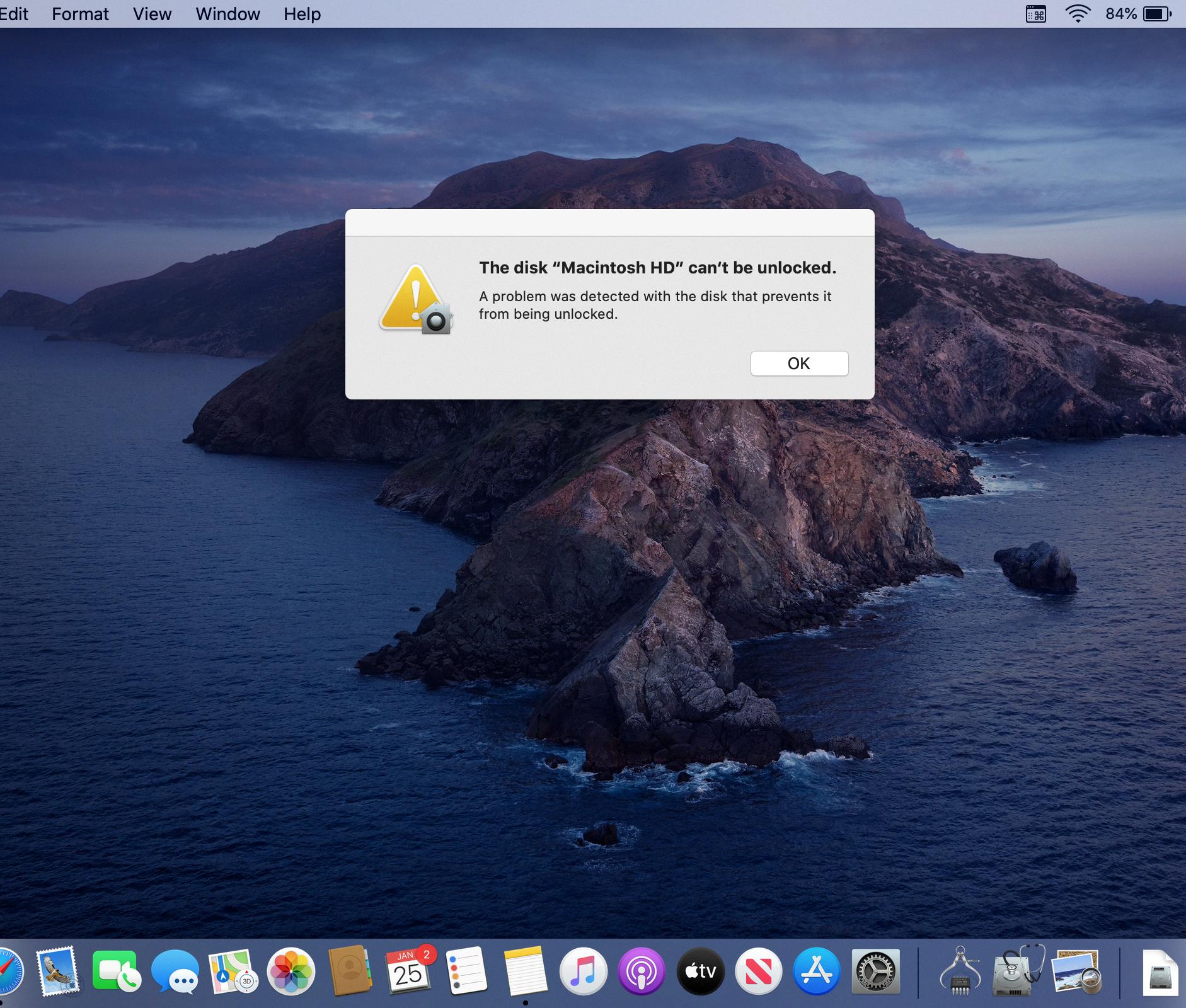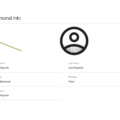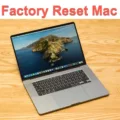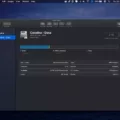The Macintosh HD is the primary hard drive on a Mac computer, where all the system files, applications, and user data are stored. It plays a crucial role in the overall performance and functionality of the Mac. However, there are instances when users encounter issues with their Macintosh HD, such as the disk being locked and unable to be unlocked. In this article, we will explore this problem and provide some possible solutions.
When the Macintosh HD is locked, it means that the system cannot access or mount the drive properly. This can happen due to various reasons, including software glitches, file system errors, or even hardware malfunctions. Whatever the cause may be, it can be a frustrating experience for users as it can prevent them from accessing their important files and data.
One of the easiest ways to resolve the Macintosh HD data error is to run the First Aid feature from within Disk Utility while your Mac is booted in Recovery mode. The First Aid feature is a powerful tool that can inspect and repair your hard drive, container, and various volumes. It can help identify and fix any issues with the file system, directory structure, or disk permissions that may be causing the lock.
To access the Recovery mode, restart your Mac and hold down the Command and R keys simultaneously until the Apple logo appears. Once in Recovery mode, select Disk Utility from the Utilities menu. In Disk Utility, select the Macintosh HD and click on the First Aid button. Follow the on-screen instructions to run the repair process. After the repair is complete, restart your Mac and check if the disk can now be unlocked.
Another possible reason for the Macintosh HD being locked is if you have encrypted the disk and connected an external backup disk. In this case, disconnecting the external disk may lock it, and you will need to enter the backup password to unlock it. If you have forgotten the password, you may need to contact Apple Support for further assistance.
In some cases, the Recovery HD itself can get locked, leading to the appearance of an error message that says, “Hard Drive locked.” To resolve this issue, you can go to Disk Utility, select the hard drive, and click on the “Enable Journaling” option. This should unlock the drive and allow you to access your files again.
If you encounter a situation where the Macintosh HD appears greyed-out in Disk Utility, it indicates that there is no hardware error, as your Mac can still recognize it but can’t mount it. This gives you a chance to repair it and retrieve all the lost data. In such cases, you can try using third-party data recovery software or consult a professional data recovery service to assist you in recovering the data from the locked Macintosh HD.
Encountering a locked Macintosh HD can be a frustrating experience, but there are various solutions you can try to resolve the issue. Running the First Aid feature in Disk Utility, disconnecting external disks, enabling journaling, and using data recovery software are some possible solutions. However, it’s important to remember that these methods may not always work, and it’s always a good idea to have regular backups of your important files to avoid potential data loss.
How Do You Fix The Disk Macintosh HD Can’t Be Unlocked?
To fix the issue of the Macintosh HD disk not being able to be unlocked, you can try the following steps:
1. Restart your Mac and hold down the Command and R keys simultaneously to enter Recovery mode.
2. In the macOS Utilities window, select Disk Utility and click Continue.
3. In Disk Utility, locate and select the Macintosh HD disk in the sidebar.
4. Click on the First Aid button at the top of the Disk Utility window.
5. Click Run to start the First Aid process. This will check and repair any errors on the disk.
6. Wait for the process to complete. It may take some time depending on the size and condition of the disk.
7. Once the First Aid process finishes, restart your Mac normally and see if the disk can be unlocked now.
If the above steps don’t resolve the issue, there are a few additional troubleshooting options you can try:
– Resetting the SMC (System Management Controller): Shut down your Mac, then press and hold the power button for 10 seconds. Release the button, then wait a few seconds and turn on your Mac again.
– Resetting the NVRAM (Non-Volatile Random-Access Memory): Shut down your Mac, then turn it on and immediately press and hold the Option, Command, P, and R keys together. Keep holding the keys until your Mac restarts and you hear the startup sound for the second time.
If none of these solutions work, it might indicate a more serious hardware issue with your Mac. In such cases, it is recommended to contact Apple Support or visit an authorized service provider for further assistance.

How Do You Unlock the Disk Macintosh HD Data?
To unlock the Macintosh HD disk on your Mac, you can follow these steps:
1. Start by restarting your Mac and holding down the Command and R keys simultaneously until the Apple logo appears. This will boot your Mac into Recovery Mode.
2. In the Utilities menu, select “Disk Utility” and click “Continue.”
3. In the Disk Utility window, you will see a list of available disks and volumes. Select your Macintosh HD disk from the list.
4. Click on the “Unlock” button located at the top of the Disk Utility window.
5. A dialog box will appear, asking for the password to unlock the disk. Enter the password that you previously set for the disk encryption and click “Unlock.”
6. If the entered password is correct, the disk will be unlocked, and you will see a green unlocked icon next to the disk name in Disk Utility.
7. You can now close the Disk Utility and proceed with any necessary actions on your unlocked Macintosh HD disk.
It’s important to note that you must remember the password you set for disk encryption to successfully unlock the disk. If you forget the password, it may not be possible to access the data on the disk. Therefore, it’s recommended to keep a secure record of the password.
What Do You Do If Your Mac HD is Locked?
If you encounter the issue of a locked Mac HD, there are a few steps you can take to resolve this problem. Follow these instructions to unlock your Mac HD:
1. Restart your Mac: Begin by restarting your Mac. Sometimes, this simple step can resolve minor issues and unlock the Mac HD.
2. Access Recovery Mode: If restarting doesn’t work, you can try accessing Recovery Mode. To do this, restart your Mac and hold down the Command (⌘) and R keys simultaneously until the Apple logo or a spinning globe appears. This will launch your Mac into Recovery Mode.
3. Open Disk Utility: Once you’re in Recovery Mode, click on “Disk Utility.” This utility allows you to manage and troubleshoot your Mac’s hard drive.
4. Select your Mac HD: In Disk Utility, you will see a list of drives on the left-hand side. Locate your Mac HD from the list and select it.
5. Unlock the Mac HD: With your Mac HD selected, go to the top menu and click on “File.” From the dropdown menu, select “Unlock.” You might be prompted to enter your administrator password. Enter the password and click “Unlock” to proceed.
6. Enable Journaling: After unlocking the Mac HD, click on the “First Aid” tab at the top of the Disk Utility window. Then, click on “Run” to check and repair any errors if necessary.
7. Restart your Mac: Once the repair process is complete, go ahead and restart your Mac normally. Hopefully, the issue of the locked Mac HD will be resolved, and your Mac will function properly again.
If these steps don’t resolve the problem, it’s recommended to contact Apple Support or visit an authorized service provider for further assistance.
Why is Macintosh HD Greyed Out?
There are several possible reasons why Macintosh HD may appear greyed out in Disk Utility. Some of the common causes include:
1. File system errors: If there are issues with the file system on your Macintosh HD, such as corruption or inconsistencies, it can cause the drive to be greyed out. In such cases, the drive may still be recognized by the system but cannot be mounted.
2. Disk permissions: Incorrect or inaccessible disk permissions can also lead to the Macintosh HD being greyed out. Disk permissions control access to files and folders on the drive, and if they are not set correctly, it can result in the drive becoming unmountable.
3. Damaged directory structure: The directory structure on the Macintosh HD is responsible for organizing and keeping track of files and folders. If the directory structure gets damaged or corrupted, the drive may appear greyed out as the system cannot access the necessary information to mount it.
4. Third-party software conflicts: Sometimes, conflicts with third-party software or system utilities can cause the Macintosh HD to become unmountable. This can happen if these applications modify or interfere with the disk’s functionality.
5. Hardware issues: While less common, hardware problems can also lead to a greyed-out Macintosh HD. This could include a faulty connection, a failing hard drive, or other hardware-related issues. However, if the drive is still recognized by the system, it is more likely a software-related problem.
To resolve the issue and regain access to your Macintosh HD, you can try the following steps:
1. First, check for software updates: Make sure your macOS is up to date, as Apple often releases bug fixes and improvements that can resolve disk-related issues.
2. Verify and repair disk errors: Use Disk Utility to run the First Aid tool on the greyed-out Macintosh HD. This will scan and attempt to repair any file system or disk errors.
3. Reset disk permissions: In Disk Utility, select the Macintosh HD and click on the “First Aid” button. Then, choose the option to repair disk permissions. This will reset the permissions to their default settings.
4. Rebuild the directory structure: If the directory structure is damaged, you can use third-party disk repair tools like DiskWarrior or TechTool Pro to rebuild it. These tools can help fix issues that Disk Utility may not be able to resolve.
5. Check for conflicts: If you suspect a conflict with third-party software, try booting your Mac into Safe Mode (hold the Shift key during startup) to disable any unnecessary extensions or startup items. If the drive mounts in Safe Mode, it indicates that a third-party software conflict may be the cause.
If none of these steps resolve the issue, it is recommended to seek professional assistance or contact Apple Support for further guidance.
Conclusion
Resolving the Macintosh HD data error can be done effectively by utilizing the First Aid feature in Disk Utility while your Mac is in Recovery mode. This feature allows for the inspection and repair of your hard drive, container, and various volumes, offering a convenient solution for resolving data errors.
If you have encrypted your backup and it is stored on an external disk connected to your Mac, disconnecting the disk may result in it becoming locked. In such cases, you will need to enter the backup password you created when enabling encryption to unlock the disk.
Furthermore, if you encounter a “Hard Drive locked” error message, it may indicate that the Recovery HD has become locked. To address this issue, simply access Disk Utility, select the hard drive, and click on “enable journaling” to unlock the drive.
In instances where the Macintosh HD appears greyed-out in Disk Utility, it signifies that there is no hardware error, as your Mac can still recognize it but is unable to mount it. This provides an opportunity to repair the drive and retrieve any lost data.
With the appropriate steps and tools, resolving Macintosh HD data errors is achievable, allowing you to regain access to your files and ensure the smooth functioning of your Mac.








